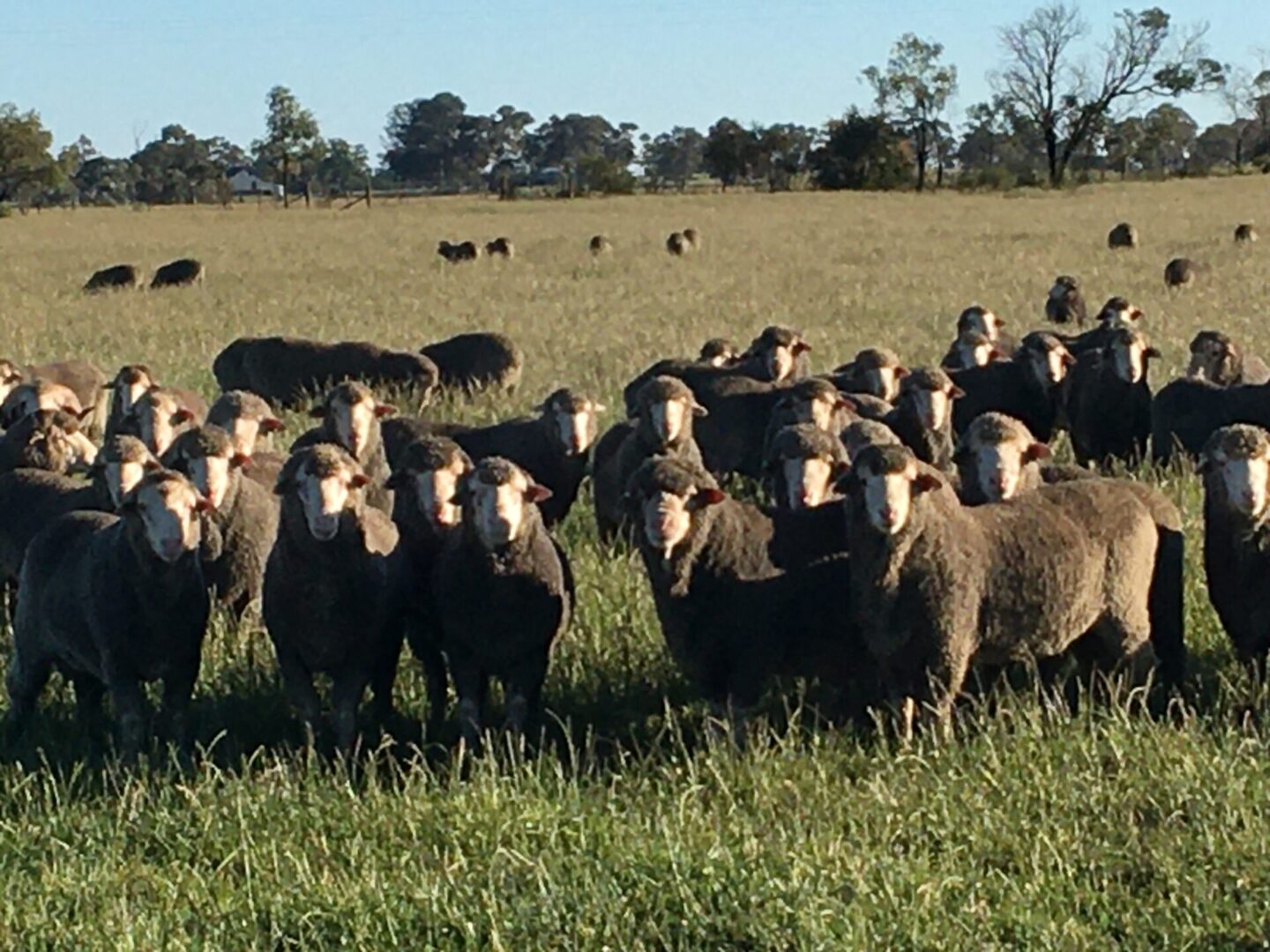
WHY CHANDLER LIVESTOCK
We have all heard the jokes: Two farmers are talking, one points to a mob of sheep sitting under a tree and says to the other, "Do you see that mob of sheep over there? Do you know what they are doing? Planning how they are going to die!" Or the cautionary tales of needing to be careful about shaking the hand of a New England sheep cocky at the end of summer because of the workout he will have had using a drenching gun.
Keeping sheep alive is hard enough, especially in summer-dominant rainfall areas and with the highly variable seasonal conditions that we are now seeing. But on top of that, you have to think about which sheep are the most productive, which produce the best quality product (whether it is wool quality or meat eating quality), and which are the easiest and most cost-effective to run. It is really tough to find all of this in one package.
About our sheep
We started breeding our own rams at Chandler Livestock because of the challenges around finding everything we were looking for in that one package. It was hard to find highly productive sheep that could maintain body conditions under high stocking rates without the need for high labour inputs to manage parasite and disease issues. So, more than 10 years ago, we decided to do it ourselves and started breeding our own Merino rams. More recently, we have added White Suffolk's into the mix with the same focus on profit drivers and ease of management. We hope this experience puts us in a position to help you overcome the same challenges in your business.
At Chandler Livestock, we do the hard work for you by supplying rams that combine productivity and quality of product with resilience and welfare traits.
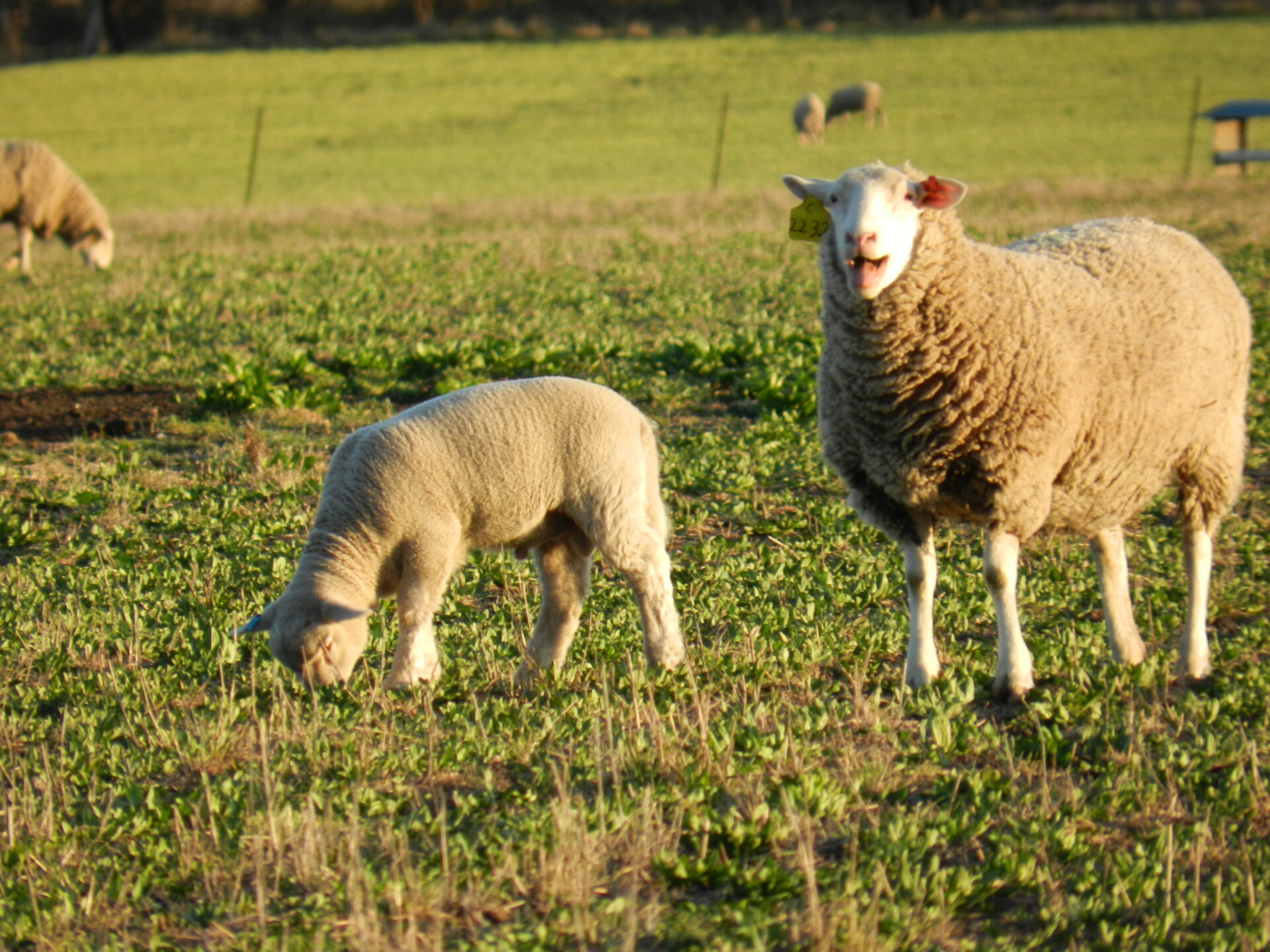
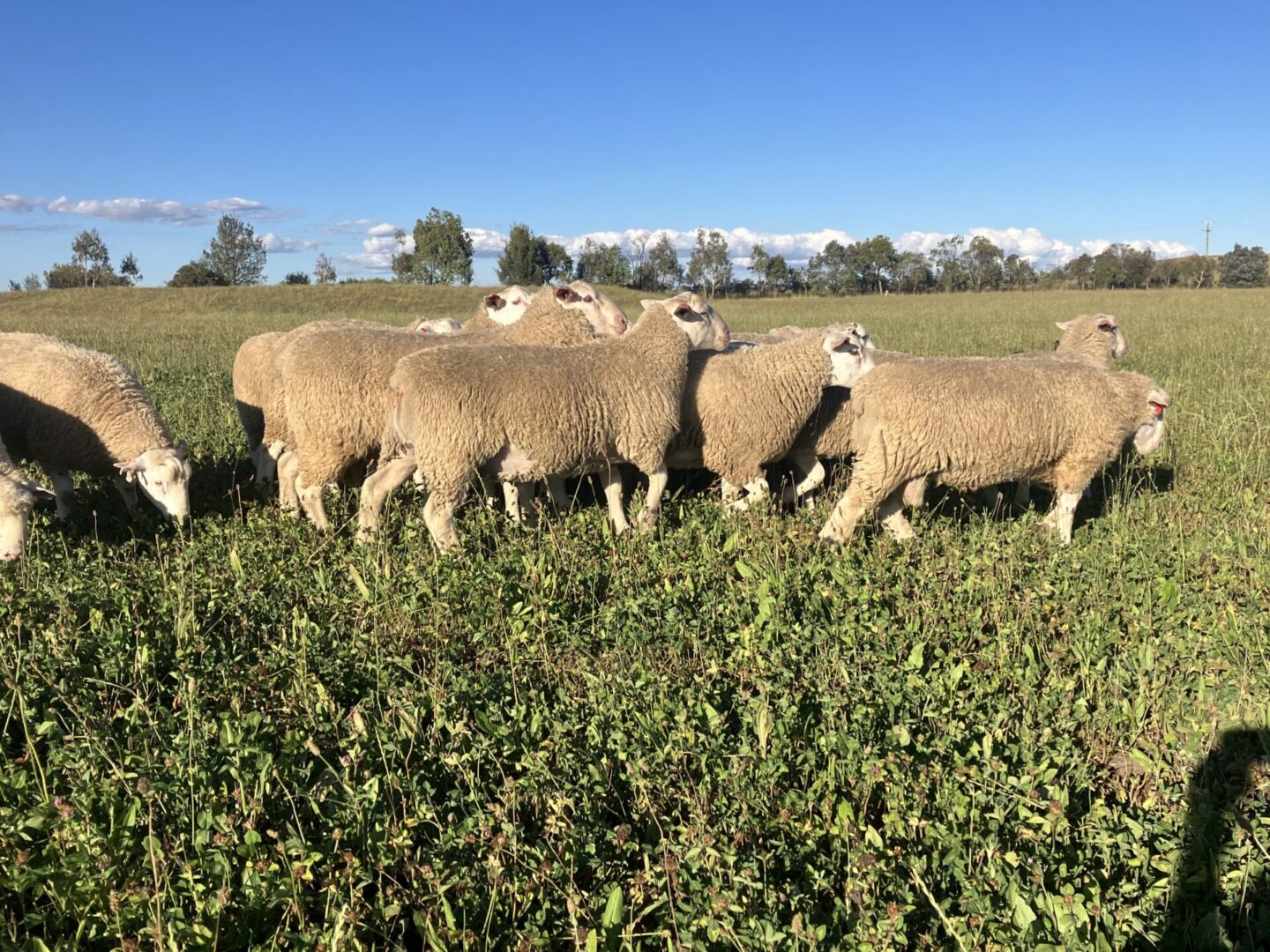
Chandler Poll Merino rams won't just give you long, white, lustrous wool. You will also get super-fine Merinos with genetics that are above average for growth and condition scores, with worm resistance in the top 25% and weaning rates in the top 10% of all Merinos included in the MERINOSELECT evaluation.
Chandler White Suffolk rams allow you to maximise kilograms of lamb produced per hectare with more live lambs born due to moderate (below average) birth weights but growth, eye muscle depth, and fat depth all in the top 30% or better in comparison to all terminal breeds in the LAMBPLAN evaluation. Intramuscular fat and shear force (tenderness) are in the top 20%, giving a great quality product and happy consumers.
By choosing rams from Chandler Livestock, you will be able to make balanced improvements to your flock. More lambs. Better productivity. Higher quality. Less labour.
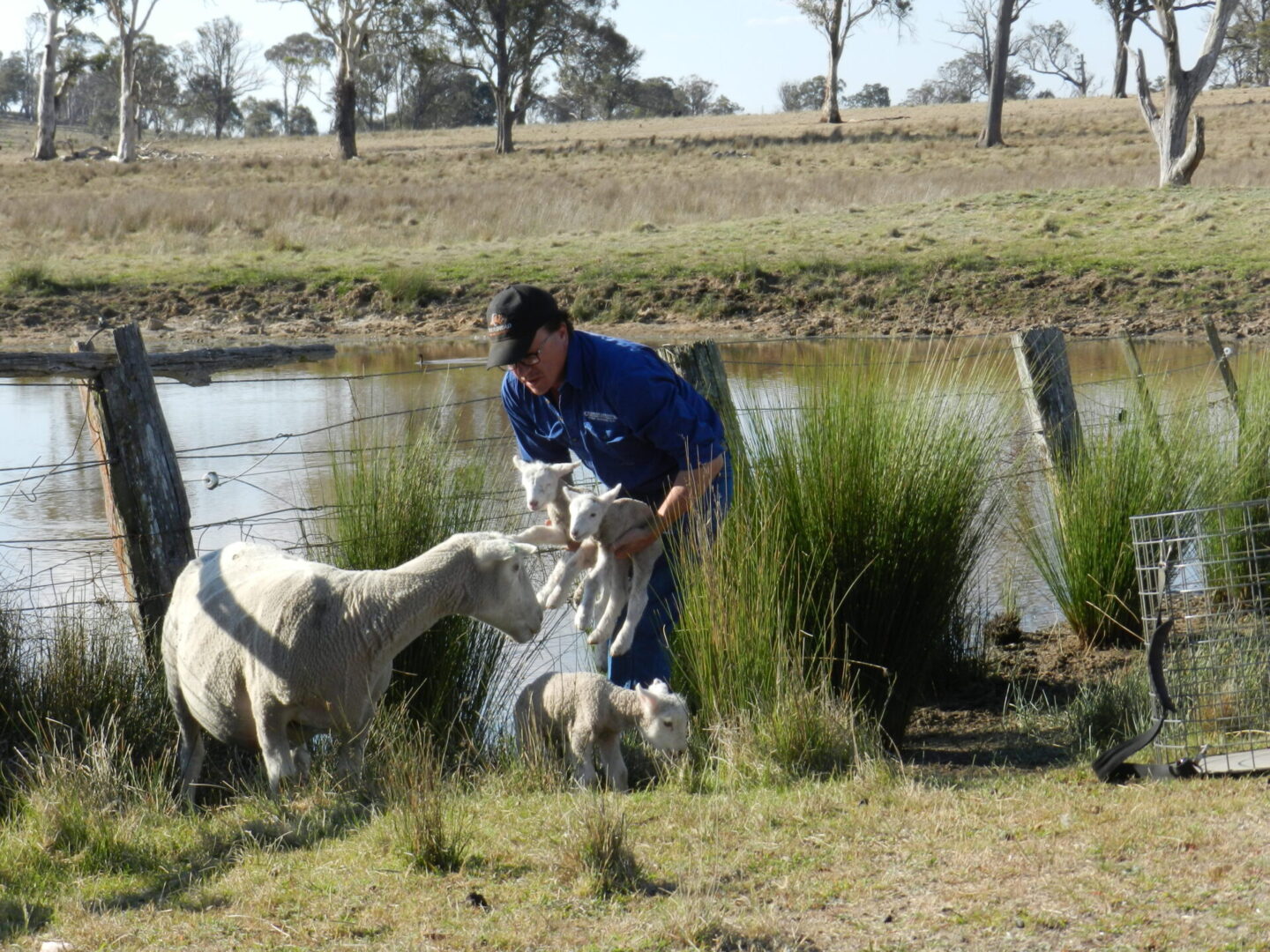
About Us
Our family has been involved in agriculture and livestock production for several generations. We (Hamish and Le-Anne) bought our first farm in the New England region more than 25 years ago. As we built a sheep breeding enterprise in a new district, we learned many lessons the hard way; we have dealt with many of the same issues that are important to your business. At the core of our sheep breeding enterprises has been a focus on finding sheep that not only improve on the key profit drivers that are important to our business but also meet our expectations for animal welfare and sustainability.
In addition to having operated our own farming business for more than 25 years, Hamish has also spent more than 20 years working in the more technical part of the livestock genetics industry. Over that period of time, Hamish has worked as a BREEDPLAN Consultant at ABRI, a LAMBPLAN Development Officer, a Sheep Genetics Manager, and a Livestock Genetics Program Manager at Meat & Livestock Australia, if there is anything that you would like to know about how to use ASBVs/EBVs, how the genetic evaluations work, breeding program design, how to use tools like Genomics and MateSel, or, put more simply, how to improve your flock faster, please get in contact.
About our breeding program
Poll Merino
– Chandler Poll – NSW Stud Merino Breeders Flock Number 6020
(Previously recorded with MERINOSELECT as The Ridge Merino unregistered flock 609264)
Not long after buying our first property in 1998, we started breeding Merinos, initially sourcing rams from several of the locally available bloodlines. While these sheep had the wool types needed for our environment, we wanted to see greater improvements in growth, fleece weights, and reproductive rates in particular.
In response to this, we introduced higher-performance genetics from outside the district. This gave us a significant increase in productivity but came at a cost to wool type and worm and fly resistance.
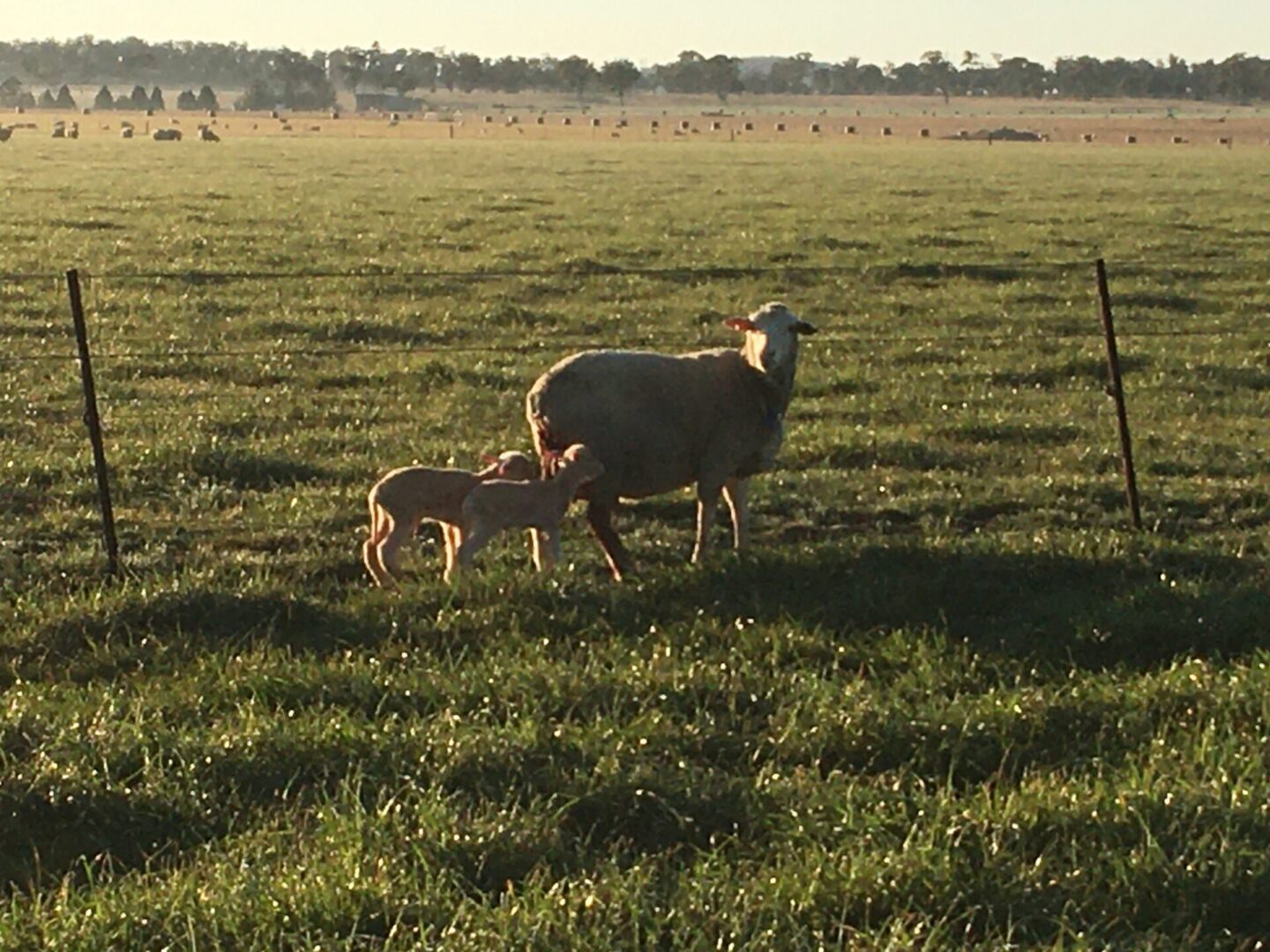

In 2012, we decided that the only way to bring all the important traits together into our breeding program was to breed our own rams. We classed, fleece weighed, micron tested, and pregnancy scanned 2,500 Merino ewes to find our most productive and fertile sheep to start breeding rams from. We introduced the best genetics available by artificial insemination and classed the progeny heavily to ensure that they suited the environment that we operate in and the market we supply.
More recently, we decided to register the stud with NSW Stud Merino Breeders. Poll Merino stud ewes were purchased from Nerstane, and our existing ram breeding nucleus was inspected and upgraded. We also added Poll Merino stud ewes from Petali.
Today, we operate under the name of Chandler Poll Merino Stud. We continue to combine the classing of animals to ensure they suit our environment and markets with the heavy use of objective measurement and technology. As much as possible, all lambs have the pedigree and genomic information recorded and are extensively measured for a wide range of traits.
We believe that the following trait groups are key drivers of profitability and sustainability in our business and our clients' businesses.
Fleece Value
Fleece weight is a large driver of overall fleece value along with microns, colour, and style. However, we choose to take a balanced approach here, focusing on overall fleece value instead of just weight. While we do continue to add more wool, too much emphasis on fleece weight can have an impact on an animal's ability to maintain body condition and lamb survival.
The inclusion of selection pressure on wool colour and style doesn't just impact fleece value; it also has benefits for fly strike resistance.
The average micron of our adult sheep is around 17.0 to 17.2 microns under current management and conditions.
Growth and Carcase
Often Merino enterprises these days are generating at least 70% of their income from sheep sales. For this reason, growth and carcase traits cannot be ignored. We aim to produce Poll Merino sheep with better than average growth and carcase traits. We are conscious that any increase in adult weight comes at a cost and needs to be managed.
While we don't agree with single trait selection for any trait, we have found that improving growth, muscle, and fat has led to animals that can maintain body condition better, more able to withstand parasite burdens and have better lamb survival.
Fertility
Again, with the proportion of income that comes from surplus sheep, fertility is an important profit driver. Overall, the reproductive rate has been one of our key focus areas, with our genetic trend for the Weaning Rate currently in the top 10% in MERINOSELECT. This is particularly important for clients who want to mate part of their ewe flock to White Suffolk rams or other prime lamb breeds.
Sustainability
Sustainability is of growing importance to the agricultural industries and is an emerging trend that consumers are interested in. We are confident that our breeding program using currently available traits addresses many aspects of sustainability already and would be improving methane intensity. However, sheep producers do not yet have access to information to allow us to select directly for Net Feed Intake or Methane Production traits. This is why we support research through projects like the Resource Flock and are excited to be able to have our Poll Merino flock included in the "Selecting for more methane efficient sheep project" conducted by the University of New England with the support of MLA.
Health and Welfare
Wanting to improve worm resistance was a major factor behind our decision to start breeding rams. The New England district has the dubious reputation of being the worm capital of Australia. We wanted sheep that remained highly productive in a challenging environment. The average for our flock now sits in the top 25% of the MERINOSELECT analysis.
In addition to this, we also ceased mulesing in 2005. In this environment, we don't just have to select animals for lower breech wrinkle, but also wool colour and fewer dags.
We believe the only way to make progress for these traits is to put pressure on young animals and measure the performance for these traits so we can make an informed selection decision.
White Suffolk
– Chandler White Suffolk – Australian White Suffolk Association Flock 987
We have had an interest in the White Suffolk breed for many years because of the breed's ability to get live lambs on the ground without compromising growth rates. The progressive attitude of the breeders and the breed association means they have been making huge progress. So when Steve and Debbie Milne from Waratah White Suffolk's made the decision to disperse their flock in 2022, we decided to make the most of the opportunity and establish the Chandler White Suffolk stud.
The first drop of stud White Suffolk lambs performed so well that we added to our stud ewe numbers by purchasing more ewes from Gates White Suffolk stud. We are very thankful to have been able to establish a stud based on such high-quality genetics, and think that being able to provide our clients with both Poll Merino and White Suffolk genetics will be a great match.
The following trait groups are key drivers of profitability and sustainability for White Suffolk ram buyers and are the focus of our breeding program.
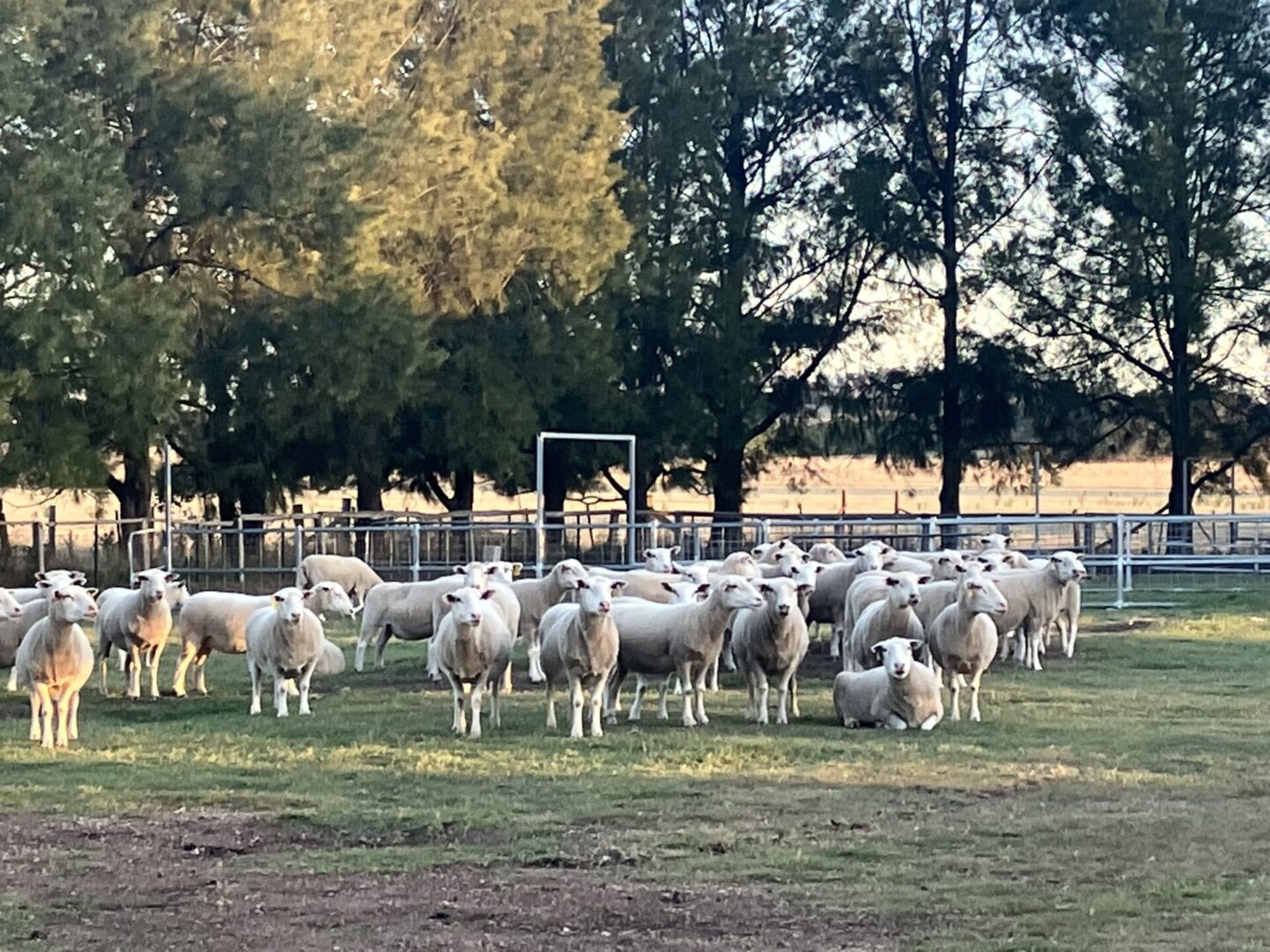
Birth Weight and Lambing Ease
The ability to get live lambs safely on the ground is a non-negotiable for any sheep breeding program. We aim to provide rams with birth weights suitable for mating to all ewes types, including New England fine-wool Merinos, without compromising other profit drivers. All lambs are tagged, weighed, and scored for lambing ease at birth, so rams can be selected with confidence.
Growth and Carcase
Growth rate and carcase traits like lean meat yield are key drivers of kilograms of lamb produced per hectare, alongside reproductive rate. All lambs are routinely weighed and also scanned to measure eye muscle depth and fat depth while being run under commercial production conditions.
Eating Quality
If we want shoppers in the supermarket to continue paying a premium price for lamb, we need to deliver a high-quality product to them every time. We now know that as we improve muscle and lean meat yield, we can have an unfavourable impact on eating quality. To counter this, we are taking a balanced approach in our breeding program that includes intramuscular fat and shear force (tenderness) so we can improve eating quality at the same time as continuing to improve the kilograms of lamb produced. The average of the most recent lamb crop is the top 20% of the Terminal LAMBPLAN analysis for eye muscle depth, intramuscular fat, and shear force.
Health and Welfare
For the same reason that worm resistance is important in our Poll Merino breeding program, we have included worm resistance in our White Suffolk program as well. Including worm resistance means prime lamb producers can get their lambs up to weight with fewer interventions. Lambs are able to achieve more of their genetic potential for growth in seasons where there is a high worm challenge.
Sustainability
The balance of traits in our breeding program means that high-value lambs can be turned off early. This means lifetime feed use is kept to a minimum, improving sustainability outcomes, including methane production.
We love to talk to like-minded people about all aspects of the sheep industry. If we can be of any help with any challenges you are looking to solve in your sheep breeding business, or even if you would just like to have an interesting chat about the industry, please do not hesitate to get in touch.
